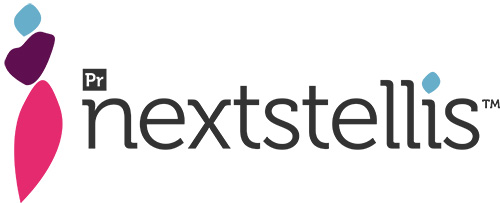Frequently Asked Questions (FAQs)
Answers to your commonly asked questions
Below are side effects you may experience while taking NEXTSTELLIS. While you’re on NEXTSTELLIS, pay attention to your body and how it feels– if you experience any side effects not listed here, talk to your healthcare professional.
- Headache
- Acne
- Skin colour changes, red skin lumps
- Burning, prickling skin feeling
- Excess hair on face, chest, abdomen or legs
- Breast colour change, pain, swelling or tenderness
- Decreased libido
- Weight change
- Nausea and vomiting
- Abdominal or back pain
- Sleep disorder like insomnia or somnolence
- Dizziness
- Hot flush
- Constipation
- Diarrhea
- Black or bloody stools
- Heart burn
- Urinary tract infection
- Flu-like symptoms
- Respiratory tract infections including bronchitis, runny nose, stuffy nose, sore throat
- Dry eyes
- Hair loss
- Bruising
- Bladder spasm
- High or low blood pressure
DISCLAIMER:
This is not a complete list of side effects. For any unexpected side effects, talk to your healthcare professional.
Please refer to the Patient Medication Information section of the NEXTSTELLIS Product Monograph for more information.
To help you keep track of any side effects you may be experiencing from NEXTSTELLIS, download your NEXTSTELLIS journal today! This journal was designed to help you navigate through your journey with NEXTSTELLIS by helping you keep track of all your symptoms and anything you’d like to discuss with your healthcare professional.
You should not take NEXTSTELLIS if you:
- Are allergic to any of its ingredients;
- Have or have had a blood clot;
- Have a blood clot disorder;
- Have a family history of blood clot disorders;
- Have severe high blood pressure or high blood pressure that is not under control (hypertension);
- Have an unusual amount of lipoproteins in your blood;
- Have diabetes with complications;
- Increasing age such as a woman older than 50 years old;
- Are over 35 and smoke;
- Have too much body fat;
- Had or will have a major surgery (including to the legs, pelvis or nervous system);
- Can’t stand or move for long periods of time, including prolonged bed rest;
- Have had a stroke or heart attack;
- Have or have had coronary artery disease (including angina) or a condition that may be a first sign of stroke (such as a mini stroke, a small reversible stroke, or chest pains);
- Have a disease of the heart valves with complications;
- Have kidney problems;
- Have adrenal problems;
- Have or you might have breast cancer;
- Have a cancer of the uterus, or a cancer that is sensitive to hormones;
- Have unusual vaginal bleeding without a known reason;
- Have liver disease;
- Have or have had a history of liver tumours (cancerous or non-cancerous);
- Have or have had jaundice. This is when the skin or whites of the eyes turn yellow. This may have been related to other medicines you were taking or may have happened during pregnancy;
- Have blood vessel disease of the eye that has caused loss of vision;
- Are or think you might be pregnant;
- Have or have had migraine headaches with or without focal aura (flashes of light, blind spots and other vision changes);
- Have or have had inflammation of the pancreas (pancreatitis) and high levels of fat in your blood (triglycerides).

You will start taking NEXTSTELLIS on Day 1 of your next period or on the first Sunday after that period begins. Then, you’ll be taking one pill around the same time every day for 28 days. You should get your period during the last four days of that cycle.

Breakthrough bleeding or spotting sometimes happens in women using birth control pills, including NEXTSTELLIS. This is blood coming from the vagina between periods. This is more likely to happen during your first few months on NEXTSTELLIS. If you notice that the breakthrough bleeding is heavy or doesn’t stop, be sure to give your healthcare professional a call.

While taking NEXTSTELLIS, you might not get your period each month. However, if you didn’t take your pills as directed by your healthcare professional, you should have a pregnancy test to rule out if the missed period is because you are pregnant. Also, if you have been having regular periods and then do not have a period for two or more cycles, you may be pregnant. Contact your healthcare professional if this happens.

When you stop using NEXTSTELLIS, you will get your period. If you want to get pregnant, wait until after your next period to start trying, as this will help to better date the pregnancy. You can always speak to your healthcare professional about other forms of birth control, such as condoms, that you and your partner can use during this interval.
Before starting NEXTSTELLIS
Your healthcare professional will conduct a physical exam to examine your breasts, liver, arms and legs. During your first exam, you can also expect the following:
- A pelvic exam, including a PAP smear
- Questions about your medical history and that of your close relatives
- Blood pressure measurements
- Blood tests
While taking NEXTSTELLIS
You will need to have regular checkups with your healthcare professional.

Your first checkup should be about 3 months after starting NEXTSTELLIS.
Then, you should see your healthcare professional about once per year.
At these visits, your healthcare professional will conduct physical and internal exams, as well as measure your blood pressure and perform blood tests.

If you are scheduled for any laboratory tests, be sure to tell your healthcare professional that you are taking NEXTSTELLIS. This is because birth control pills can affect some blood tests.
NEXTSTELLIS may not work as well as it should to prevent pregnancy if you:
- miss pills,
- don’t take your pills as directed by your healthcare professional,
- have gastrointestinal problems, or
- are taking certain medicines.
If this happens, you should use another method of birth control, like condoms (barrier method). Do this while taking NEXTSTELLIS until you start a new pack of NEXTSTELLIS.
Tell your healthcare professional about all the medicines you take, including any drugs, vitamins, minerals, natural supplements or alternative medicines.
The following may interact with NEXTSTELLIS:
- Drugs used to treat epilepsy including felbamate, lamotrigine, oxcarbazepine, phenytoin, primidone, barbiturates, carbamazepine, topiramate, rufinamide, ethosuximide, phenobarbital;
- Drugs used to treat tuberculosis including rifampin, rifabutin;
- Drugs used to treat HIV infections including efavirenz, atazanavir/ritonavir, ritonavir darunavir/ritonavir, (fos)amprenavir/ritonavir, lopinavir/ritonavir, tipranavir/ritonavir, boceprevir, etravirine, nelfinavir, nevirapine;
- Alpha-II adrenoreceptor agents including clonidine;
- Drugs for Hepatitis C virus including ombitasvir, paritaprevir, ritonavir, with or without dasabuvir, telaprevir;
- Drugs used to treat bacterial infections like erythromycin, ampicillin, cotrimoxazole, penicillins, chloramphenicol, neomycin, nitrofurantoin, sulfonamides, tetracyclines, troleandomycin metronidazole;
- Drugs used to treat fungal infections like fluconazole, itraconazole, ketoconazole, voriconazole, clarithromycin)
- Drugs used to treat fungal infections including griseofulvin;
- Drugs used to lower cholesterol levels including clofibrate;
- Drugs used to prevent blood clots;
- St. John’s Wort, an herbal product used to treat depression and other conditions;
- Drugs used to treat diabetes including insulin and oral drugs that lower blood sugar;
- Drugs used to help you relax or sleep including benzodiazepines, chlordiazepoxide, lorazepam, oxazepam, diazepam, phenothiazines, reserpine, barbiturates, chloral hydrate, glutethimide, meprobamate;
- Drugs used to treat depression including clomipramine;
- Drugs used to treat fever, pain or inflammation including acetaminophen, ASA, antipyrine, meperidine, prednisone, phenylbutazone;
- Drugs used to treat allergies;
- Drugs used to treat migraine headaches;
- Folic acid and vitamins E and B12;
- Drugs used to help prevent organ rejection including cyclosporine;
- A drug used to help treat bleeding called aminocaproic acid;
- Drugs used to treat lung diseases such as asthma and COPD (bronchitis, emphysema) including theophylline;
- Drugs used to slow the heart rate including isoproterenol;
- Drugs used to treat high blood pressure including guanethidine, methyldopa, beta blockers, reserpine, diltiazem and verapamil;
- Drugs used to treat high blood pressure in the blood vessels between the heart and the lungs (pulmonary hypertension) including bosentan;
- Drugs used to help prevent nausea and vomiting after chemotherapy including aprepitant.
Antacids may affect how NEXTSTELLIS is absorbed in your body. If you need to use antacids, like TUMS, take them 2 hours before or 2 hours after taking NEXTSTELLIS.

